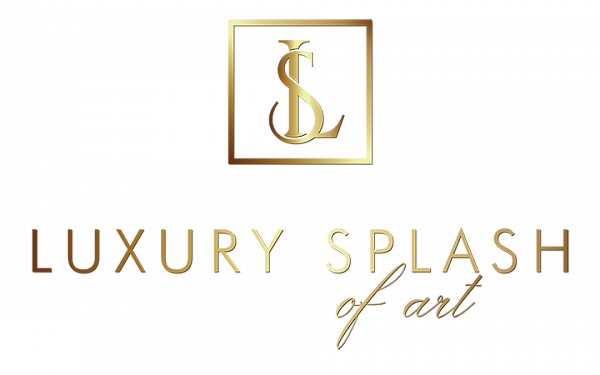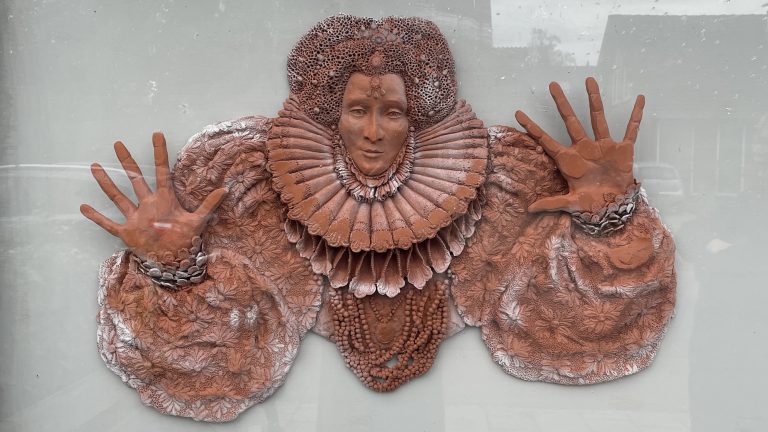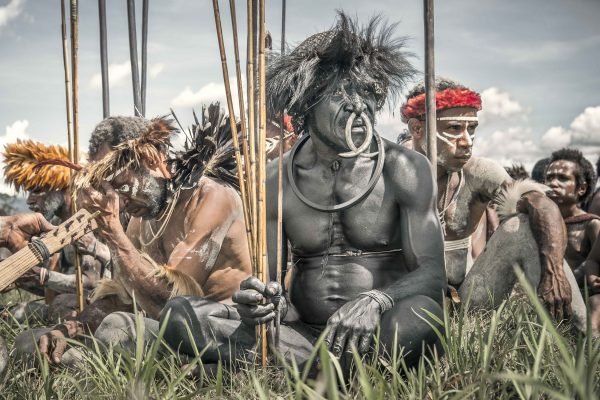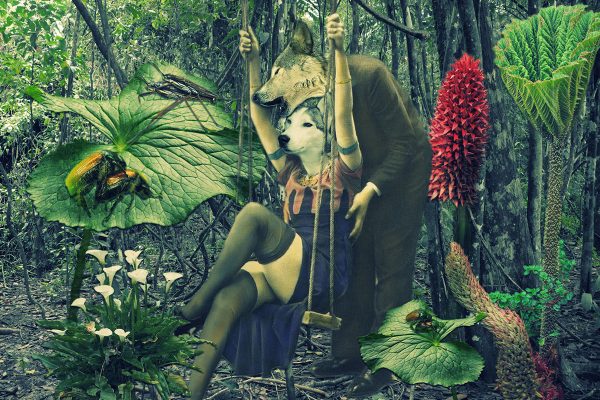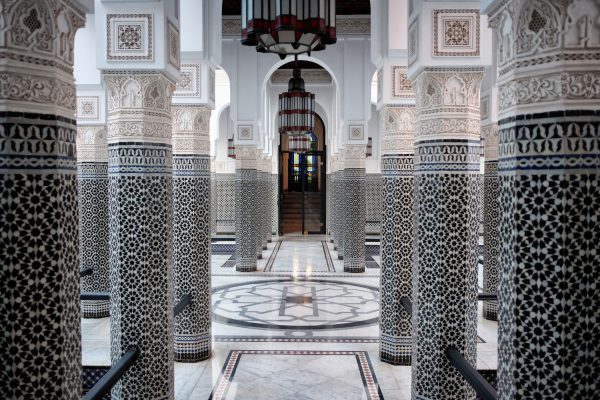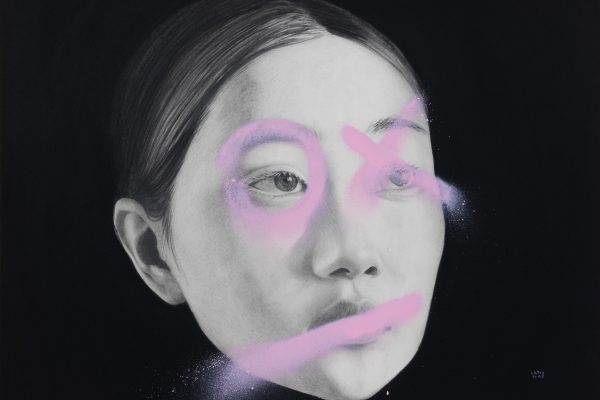Standing in front of Rothko’s blocks of blue, the flamboyant abstract compositions that seemed to burst off the Köln museum walls, the impressionable ten-year-old girl was more than dazzled. Unable to move, the Dutch adolescent experienced “a sensual, religious-like” moment. Sensations that prompted her to constantly imagine and draw. Now Instrospectie, Lost Childhood and the ruffled collar distinguishing Commedia, are similarly bathed in in luminous shades of blue. Inspired by Rothko’s playing with color and light, sculpturess Eveline Kieskamp explores ambiguity and space, along with “distortion” and the “limits of reality” to offer a host of whimsical confections.“Rothko to me was alive, intense, and he spoke to the unconventional in me, I do not make predictable pottery,” says Kieskamp in her Bennekum, Holland studio.

Working on a still unformed piece that’s been inspired by “photos, magazine articles, literature, coincidences” and recent events, she speaks about the passion for her work as if it was a “flame,” a spiritual communion.“When I am working I am not thinking about anyone or anything…I escape time. I talk to my sculptures. That is what I like…the aloneness, the calm…the unity…me and my clay totally together.”As a child Kieskamp felt a similar connection to flowers, cutting them, and styling them into bridal corsages. Relishing that type of “sculpturing,” she went on to art school in Arnhem (1998-2002), and now along with spending long days in her cozy study, surrounded by a lulling forest, teaches art to children.
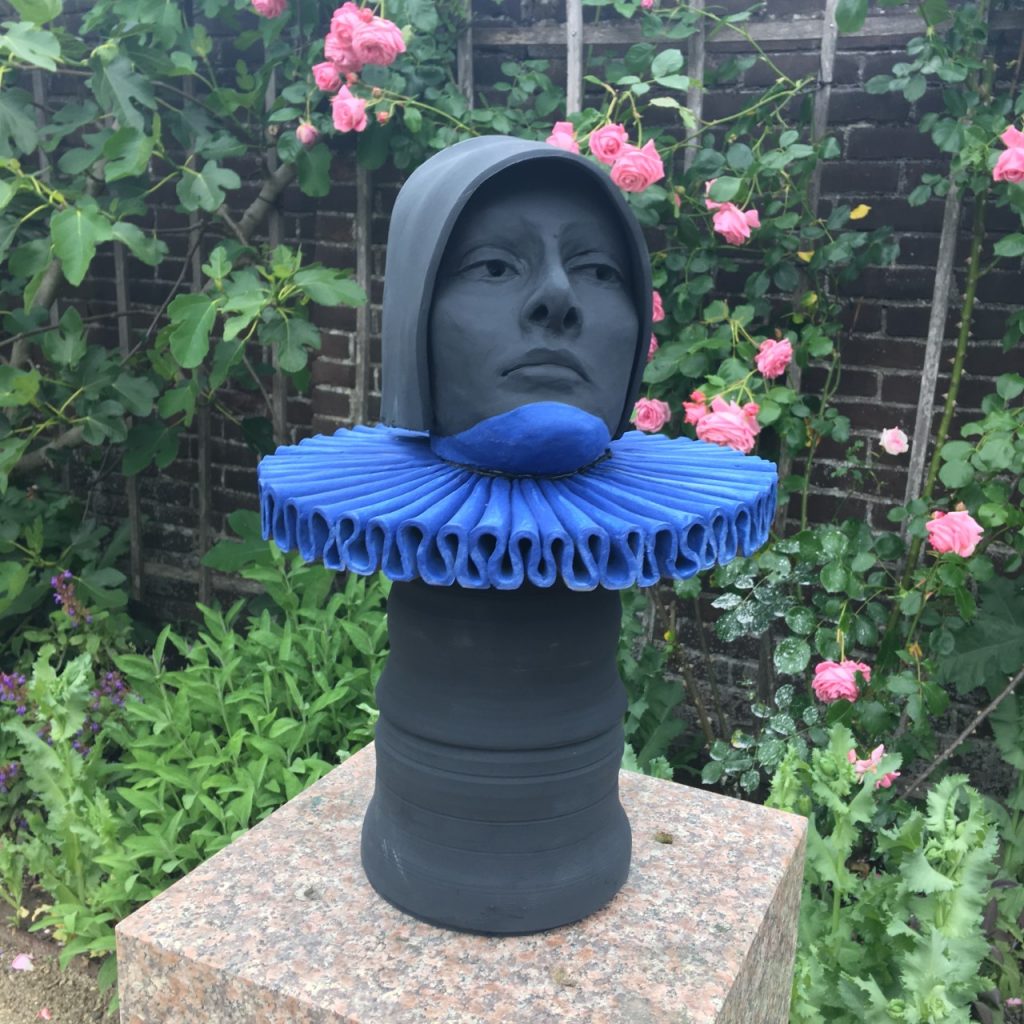
“Never playing with dolls, and not that ‘normal’ as a child, I was always assembling Lego buildings. I resisted my family’s wanting me to be a school teacher.“Yet I do like to go to fashion shows, feel fabrics…see colors…Bach…feeling clay, and now that I teach (in the Kröller-Müller Museum) I see how expressive and imaginative children are. They are instinctive…they have no restrictions…I want to be that free.”Journeying back into her childhood was impossible. There were too many ghosts there, obstructions and contrarian voices–an overarching conformity that limited her artistic growth.There was one adventurous path, however, a way to fully reconnect with her expansive imagination. It meant contending with scorching heat, and arduous treks in shifting, wind-blown sand.
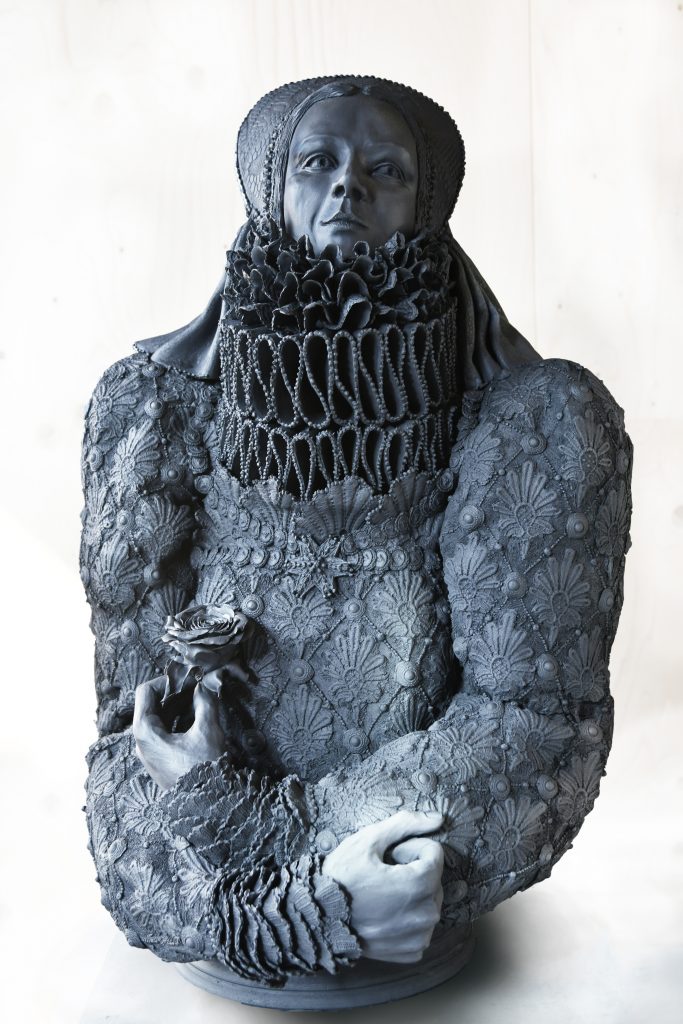
Impelled to reinvigorate her work, Kieskamp traveled to the US (2019) to Bryce Canyon and Death Valley. Besides discovering lush fields of wild flowers and limitless rock sculptures, she found her old inspirational “flame.”“All the blue, the colors of Death Valley were magical, it was like seeing Rothko again,” she exclaims. “The terrain, the textures and colors, everything was so intense.”Veering between haunting, amusingly playful, and mysteriously provocative, Kieskamp’s sculptures are a journey across another type of terrain. Shedding light on her struggling to banish the voices that led to “restrictions,” she moves past Holland’s claustrophobia (or rigidity), and daringly shares her “Holy Fire” with us. Be prepared for the unexpected.
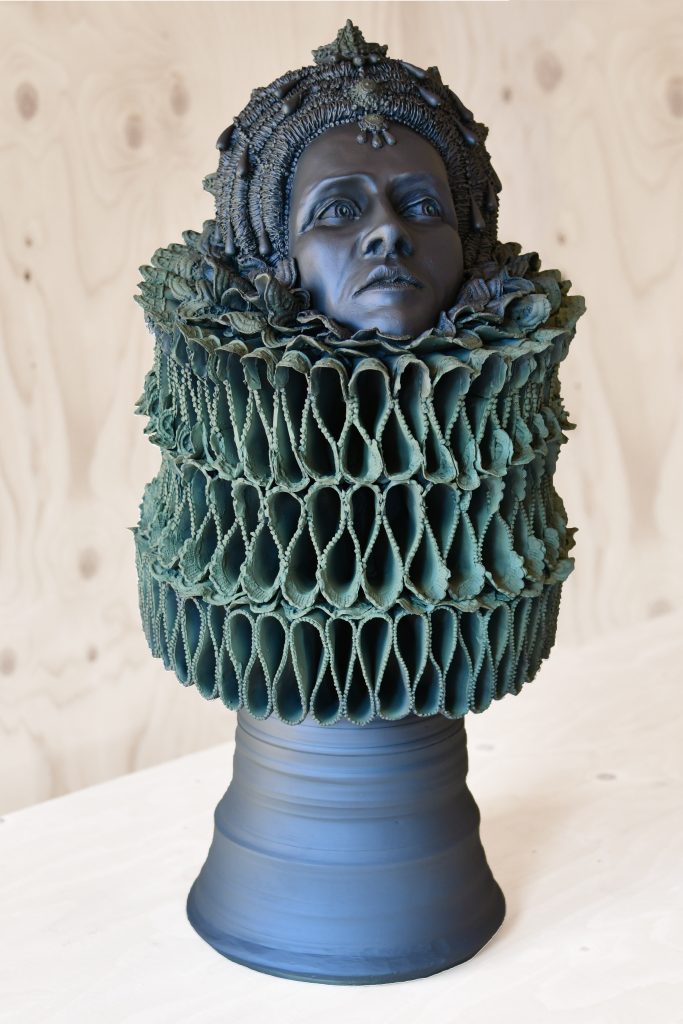
In The Frozen Queen II there is the austere matriarchal figure, the unyielding presence that demands an “icy,” unfeeling insularity–the strict adherence to “normality” that limits creativity.
Life to this particular Queen is frozen, all too limited (much like the life led by Princess Diana)–and Kieskamp’s other imperial women figures are even more dour. They are pictured as troubled victims of “closed-off” lives. Mirroring the Confinement, Breathbird (and We Hold Our Breath) are creatures evoking the Pandemic. “I was afraid to breathe,” admits Kieskamp, “and yes, this work is a bit scary. Why wouldn’t it be?”The bluish shades in Millstone, portraying a queen imprisoned in a tightly-fitting, meticulously-detailed collar, demanded constant refinements. She admits it was “a struggle to create.”
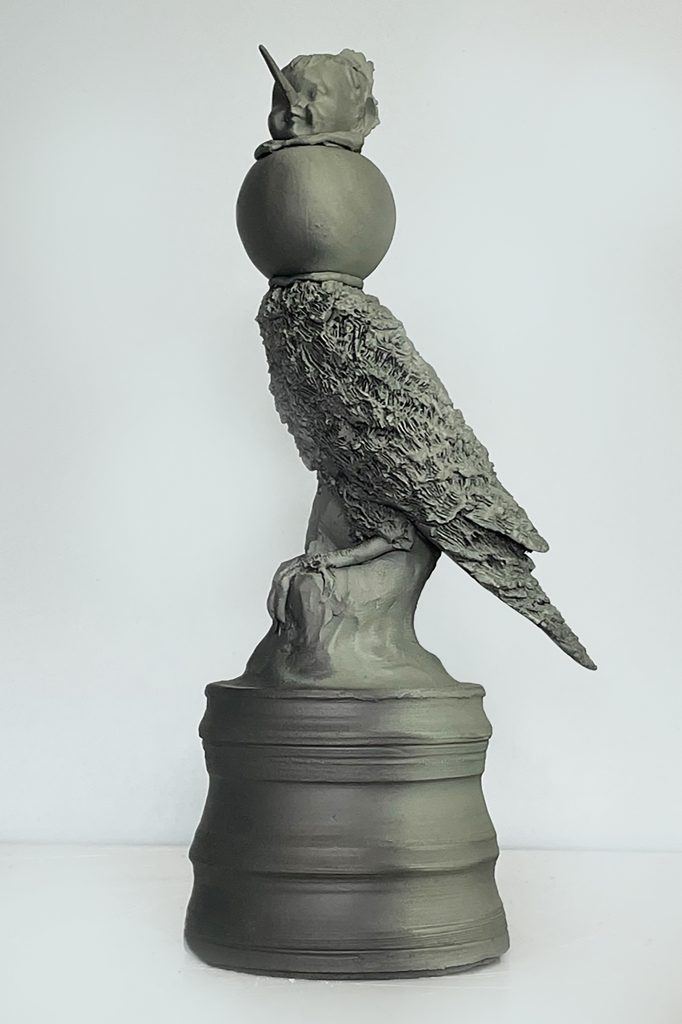
But all those moments spent by the kiln, sensing the unpredictability of the fire, and “throwing (clay), bonding with it, having a conversation with it,” are life-affirming to Kieskamp.
“I would die if not for sculpting,” she admits. “I was once confined to a hospital (2014) with Crohn’s Disease, and I realized how important beauty is to me. Looking up from my bed, seeing the bluest sky, that was life…It made me want to live, to sculpt…”
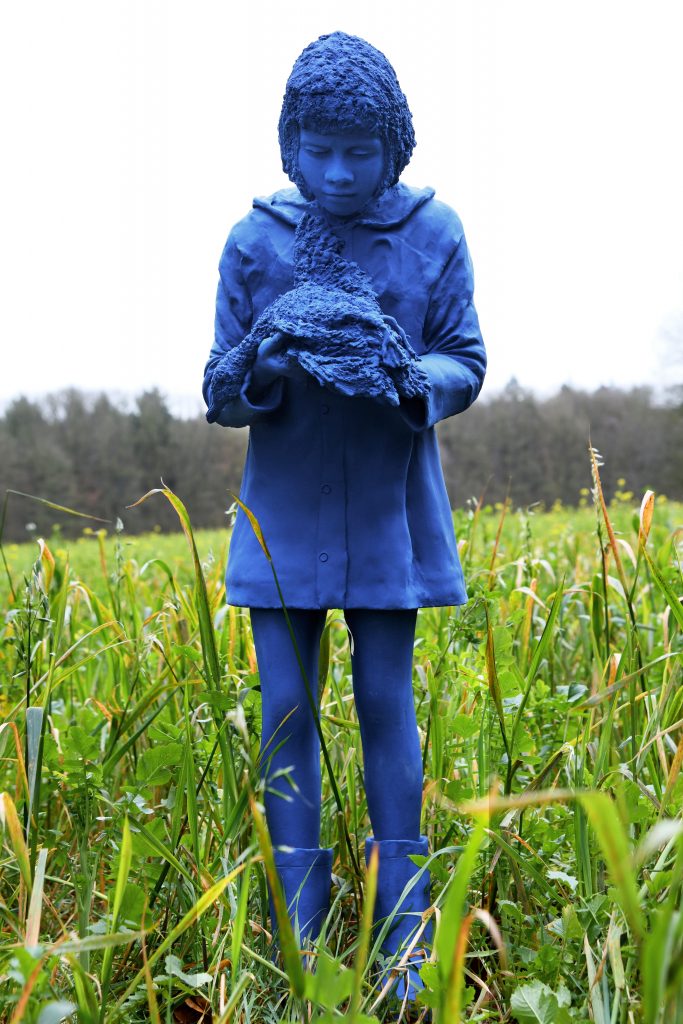
Death is at the heart of Introspectie. A Delft blue construction, it’s a homage to Keiskamp’s niece, her close friend who died in a car accident at age 11 (1988).
Besides being autobiographical, the work mirrors struggling, coming to terms with sadness, and ultimately looking upwards–finding the resolve to appreciate that blue sky.
“My Isabella (a self-portrait) is happy,” smiles Kieskamp. “I’m alive in my garden…the smells, the sounds of birds…I’m at peace with the world. At this moment I feel really good with my work.”
Written By Edward Kiersh
https://www.instagram.com/evelinekieskamp/
https://www.linkedin.com/mwlite/in/eveline-kieskamp-van-roest
https://m.facebook.com/eveline.kieskamp.5
